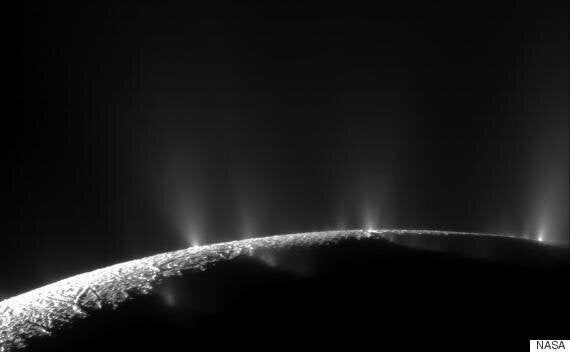The hunt for extraterrestrial life on Saturn's moon, Enceladus, has begun.
On Wednesday, a NASA spacecraft will fly through the plumes of spray shooting from Enceladus, in order to investigate if the ocean below the moon's frozen surface has the potential to host "simple forms of life."
The space agency have dubbed the flyby as "historic" as the spacecraft will reach its closest approach to the icy jet sprays of Enceladus at 3.22pm UK time on Wednesday.

What scientists will be keeping a keen eye on is the data they can gather from the flyby, more specifically, looking for the presence of molecular hydrogen in the plumes.
SEE ALSO:
Scientists say that the presence of molecular hydrogen will be an indication of the extent of hydrothermal activity going on beneath the moon's surface.
In a press release, NASA stated that by analysing this "hot-water chemistry" they could deduce "the ocean’s potential habitability for simple forms of life."
Curt Niebur, Cassini program scientist at NASA added: "This incredible plunge through the Enceladus plume is an amazing opportunity for NASA and its international partners on the Cassini mission to ask, 'Can an icy ocean world host the ingredients for life?"
Wednesday's flyby will the last of three that have taken place so far. However, it will be months before we find out the answers to questions surround extraterrestrial life.
The results could prove exciting as Niebur dubbed said the spacecraft "has been a discovery machine for more than a decade."